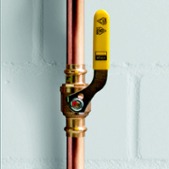Designing a plumbing system so that every fixture will have an adequate flow of water is one of the most important calculations that plumbers and plumbing engineers perform.
If the distribution system is all or partly PEX, it’s important to know the facts about fittings, flow and pressure drops in order to make the correct calculations. There’s a common misconception that PEX-A cold expansion fittings have a 25% better flow rate than Viega PureFlow’s PEX-B insert fittings. It’s not true. The difference in flow rates between the two types of fittings is negligible.
Some manufacturers insist incorrectly that cold expansion fittings don’t cause pressure drops because they’re “full flow” fittings, not insert fittings. Nonsense.
The fact is all fittings cause a pressure drop, though the degree varies by type and material. Of course, directional fittings result in the largest loss with elbows and branch tees having the greatest impact and straight couplers and tee runs having the least effect on flow rates. Excessive use of 90° elbow fittings should be avoided in any plumbing system regardless of joining method or materials. The flexibility of PEX and using snap-in bend supports eliminate the need for many elbows.
To prove the point about fittings, Viega in 2018 conducted lab tests comparing flow rates for PureFlow and cold expansion systems for kitchen faucets, showerheads and tub fills. The tests found no appreciable difference in flow rate between the two systems. You can watch the tests here:








